A Comparison of Current Production 12ax7 Tubes
admin | Mar 24, 2013 | Comments 1
Printed with Permission from AmplifiedParts.com. To download the full PDF – click here. To view Photo Gallery – click on any image below. ENJOY!
Excerpts from the Comparison Document:
Graph Interpretation
All 12AX7’s have an amplification factor (_) of 100 (“high-mu”). Ideally, every 12AX7 should yield the same gain when placed in the same circuit; however, in reality there are comparative gain differences among 12AX7’s. This graph is based on the average gain and noise measured from different tube brands, using the same number of samples for each brand. It should not be assumed that every single 12AX7 from a specific brand will match its place on this graph. The gain rating is only a relative reference (e.g. a rating of “10” does not mean ten times louder than a “1”).
A Comparison of Current Production 12AX7 Tubes by Kurt Prange
RCA and Sylvania first introduced the 12AX7 to the world in the late 1940’s. Today, it is by far the most common preamp tube used for electric guitar amplification and there is an almost overwhelming supply of current production options to choose from. The purpose of this comparison is simply to provide guitar players with a frame of reference to help in finding the best current production 12AX7 for their needs. Also included in this comparison are direct substitutes for the 12AX7 including: ECC83, ECC803, 7025 and 5751.
12AX7 Basics
The 12AX7 is a 9-pin miniature, high-mu, twin triode. What does that mean? The 9-pin miniature part tells us what kind of socket the tube plugs into. It has nine thin pins arranged along the circumference of a circle with a diameter of just under half of an inch. There is a large gap between pins 1 and 9 to ensure that the tube can only be plugged in one way. The high-mu part is referring to the electronic specification called “amplification factor,” abbreviated by the Greek letter μ (mu – pronounced myoo). This gives us a general category of amplification that the tube was designed for as compared to other preamp tube types like the “medium-mu” 12AU7. The twin triode part tells us that there are two identical and independent triodes contained within the one tube. A triode is the most basic tube structure that allows for signal amplification and it has three electrodes: plate, grid and cathode.
The Gain Test Setup
Each tube sample was tested in the same (Fender black face style) preamp circuit as shown in the schematic below with bass and treble set to their maximum. A frequency generator was used to measure voltage gain and plot the frequency response from 10 Hz to 18,000 Hz. From the frequency plot it could be seen that there are three extrema at about 50 Hz, 400 Hz and 4,000 Hz. These three frequencies were then used to quickly measure the low, mid and high frequency voltage gain on the same number of samples for each tube in our comparison. The average from each tube’s samples was then calculated and used for comparison. The smallest average low frequency gain tube was used as the reference for a gain of “1” and the largest average low frequency gain tube was used as the reference for a gain of “10”. This gain reference method was then repeated for both the mid and high frequency averages.
The Noise Test Setup
Each tube sample was again tested in the same preamp circuit and an oscilloscope was connected to the amplifier output to monitor the amplitude of the voltage spike produced by tapping on the tube’s glass envelope. The average voltage spike from each tube’s samples was then calculated and used for comparison.
The Listening Test Setup
A custom 12AX7 switching box was constructed to allow for a quick switch comparison of six tubes at a time while plugged into the V1 socket of a Marshall JCM800 2203 guitar amplifier. A separate filament transformer was used on the switching box to simultaneously heat all six comparison tube filaments without overheating the amplifier’s power transformer. A shielded cable was constructed to plug into the amplifier’s V1 socket and transfer its pin 1, 2, 3, 6, 7 and 8 connections to one tube socket at a time in the switching box. Listening tests were then conducted while playing guitar and switching between the tubes at various amplifier control settings to come up with tonal descriptions for each tube.
Kurt Prange (BSEE) is the Sales Engineer for Amplified Parts (www.amplifiedparts.com) in Tempe, Arizona, United States. Kurt began playing guitar at the age of nine in Kalamazoo, Michigan. He is a guitar DIY’er and tube amp designer who enjoys helping other musicians along in the endless pursuit of tone.
Tiny URL for this post:
About the Author: Hello. Welcome to TheToneKing.com! My name is Louis, but in name of good fun & entertainment - I call myself The Tone King. This website was born back in 2008, to compliment the videos I started uploading to YouTube on guitar & related gear (guitar, amps, pedals, etc.). It has since grown, thanks to the thousands that tune in, making it what it is. If you subscribe to TheToneKing.com, you can expect lots of Guitar, Amp, Pedal Reviews & Shoot-Out videos. I also have monthly Live Webcasts, perform Artist Interviews, and try to get all the juicy coverage Backstage and at trade-shows like NAMM. The cherry on top is that there are no shortage of How-To Videos & TTK Killer Deal Alerts getting you the most knowledge & gear into your hands & mind! Thanks for stopping by to check out my website! Rock ON!















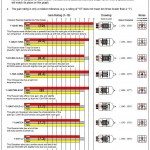
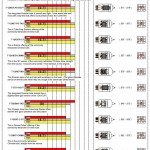
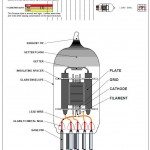
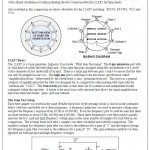
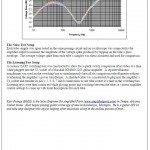






seo services
A Comparison of Current Production 12ax7 Tubes : The Tone King | TheToneKing.com